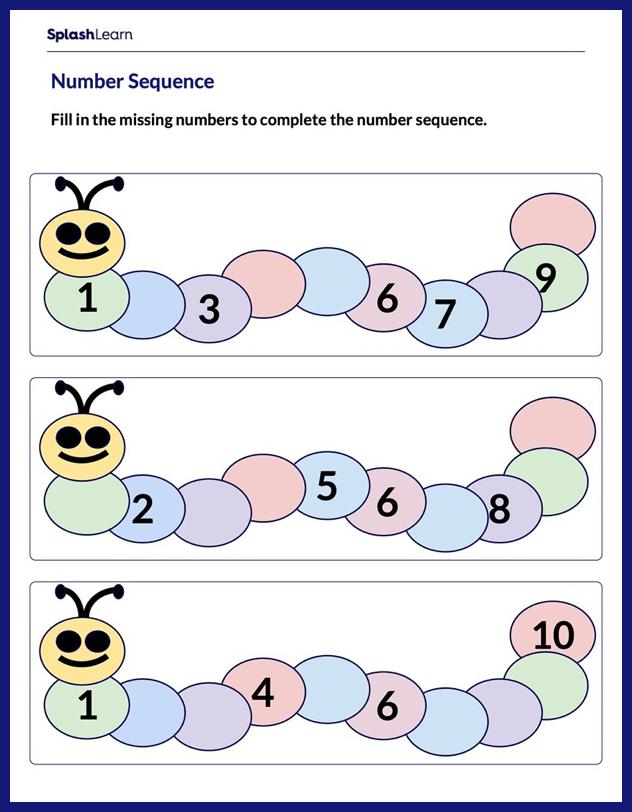What is Counting?
In math, ‘to count’ or counting can be defined as the act of determining the quantity or the total number of objects in a set or a group. In other words, to count means to say numbers in order while assigning a value to an item in group, basis one to one correspondence. Counting numbers are used to count objects.
Here, for instance, we have used counting numbers to determine the number of animals or birds. The table also shows how we can use our fingers to count objects to ten.
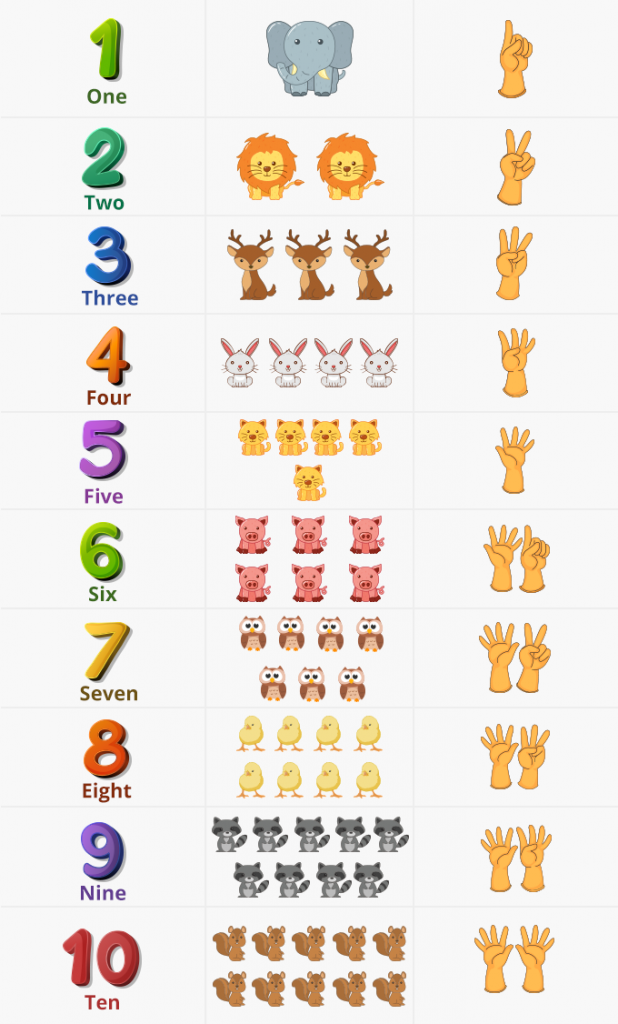
Recommended Games
Counting Numbers
Numbers that we use to count things are called counting numbers. They are also called natural numbers. These numbers start from 1 and are infinite. That is why no one knows where to end these numbers. Zero is not a natural number since we cannot count zero. 1, 2, 3, 4, and so on are examples of counting numbers.
Counting is a topic that we have learned in kindergarten. Each one of you must have different ways to count. Some understand it by counting natural numbers on their fingers and others by counting things around them. But one thing common among us is that the first thing we all learn in math is counting. These numbers are the basis of all mathematics.
Where do we use these numbers?
We use counting in performing different activities in our day-to-day life. For instance,
- Counting money
- Counting balloons in a bunch
- Counting students in a class
Representing numbers with finger arrangements allows children to learn and incorporate the fundamental properties of natural numbers. The figure below shows how we can use our fingers to represent the numbers from one to ten.
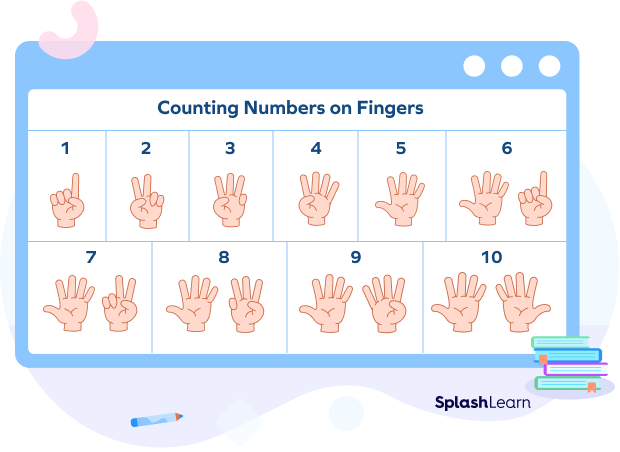
Recommended Worksheets
Number Names of Numbers 1–20
The following table gives the number names of numbers from 1 to 20.
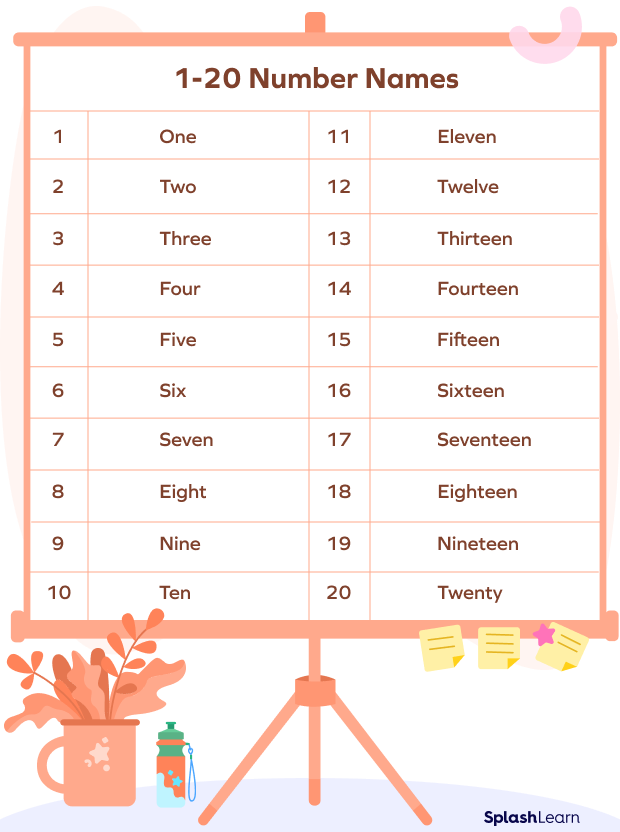
Different Ways to Count Numbers
- We can count the numbers forward. For example,
1, 2, 3, 4, 5, 6, 7, 8, 9, 10.
You can count numbers backward. For example,
10, 9, 8, 7, 6, 5, 4, 3, 2, 1.
- You can use skip counting as well.
Skip counting is the method of counting forward by numbers other than 1.
Counting by 2: 2, 4, 6…
Counting by 3: 3, 6, 9…
Counting by 4: 4, 8, 12…
How to Count?
Counting On – We can count on by saying by numbers while touching on each object once.
Here, for instance, we can count the buttons by touching each button once.
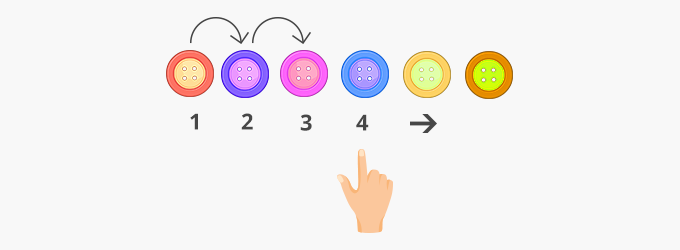
Counting on also requires us to count forward. Forward counting is counting by adding one more, every time.
Here, we forward count while putting the buttons in the jar, to find the number of the buttons.
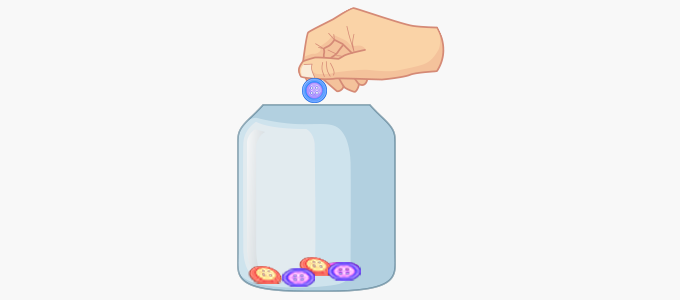
Counting Back – We can count down or back by saying by numbers in reverse order while touching on each object once.
Here, for instance, we can reverse count the buttons by touching each button once.
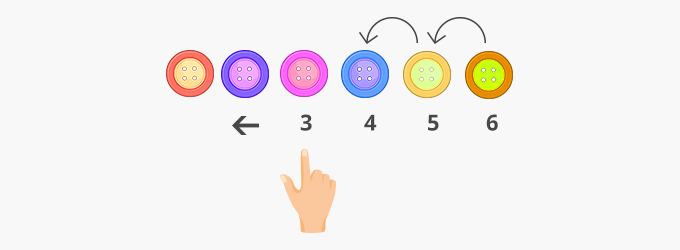
Counting back requires us to count backwards. Backward counting is counting by removing one, every time.
Here, we reverse count while taking out the buttons from the jar, to find the number of the buttons.
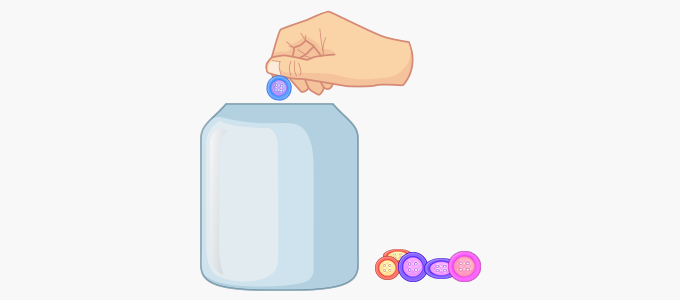
Fun Facts
1. Did you know that numbers were invented by people using their fingers.
2. Do you know what comes after a million, billion and trillion? A quadrillion, quintillion, sextillion, septillion, octillion, nonillion, decillion and undecillion.
 Let’s sing!
Let’s sing!
One for the sun shining in the sky.
Two for the little birds that fly by.
Three for the tiny seashells in the sand.
Four for the sticks I hold in my hand.
Five for the petals of the flower I see.
Six for the bees as busy as can be.
Seven for the colors in the rainbow.
Eight for the snails crawling so slow.
Nine for the squirrels climbing up the tree.
Ten for the little puppies on a running spree.
Let’s do it!
Ask your children to observe and count things around them, for instance, the numbers of flowers they see, the number of crayons they have, the number of pages of the book he has read. Further to explain more explicitly,
you can use counters such as buttons, jelly beans to help them count up and count back and ask them to write addition and subtraction facts or sentences.
Solved Examples
Example 1. Write the missing numbers between 30 and 40.
31, 32, 33, ___, 35, ___, 37, ___, ___
Solution: Number between 30 and 40 are: 31, 32, 33, 34, 35, 36, 37, 38, 39
Therefore, the missing numbers are 34, 36, 38, and 39.
Example 2. Count by 2s and find the missing numbers.
8, __, 12, __, 16
Solution: Skip counting is counting forward by numbers other than 1. So, skip counting by 2s from 8 to 16. We get
8, 10, 12, 14, and 16.
Therefore, the missing numbers are 10 and 14.
Example 3. Write the even counting numbers less than 10.
Solution: Even numbers are divisible by 2.
Counting numbers less than 10: 1, 2, 3, 4, 5, 6, 7, 8, 9
So, even numbers less than 10: 2, 4, 6, 8
Example 4. In the figure below, observe the pattern and find the number of dots in the fourth box.
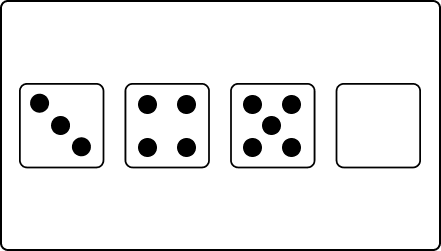
Solution:
Number of dots in the first box $= 3$
Number of dots in the second box $= 4$
Number of dots in the third box $= 5$
So, the number of dots in the fourth box must be 6.
Practice Problems
Counting Numbers – Definition with Examples
How many apples are there in the figure?
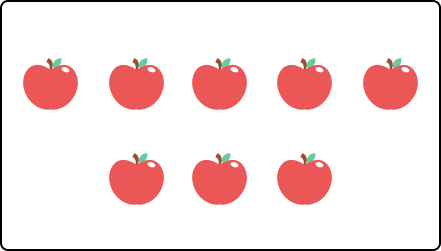
There are eight apples.
What is the sum of the two missing numbers?

The given figure, between 1 and 10, 3 and 7, are missing. So, the sum of the missing numbers is $3 + 7 or 10$.
Which of the following is not a counting number?
Natural numbers start with 1; zero is not a counting number.
Find the missing number.
$55, \underline{} , \underline{}, 58$
55, 56, 57, 58
Frequently Asked Questions
Are negative numbers also counting numbers?
No. We don’t use negative numbers for counting.
What is the importance of counting numbers on fingers?
Counting on fingers is a constructive strategy to teach students math concepts. Representing numbers with finger arrangements allows children to learn and incorporate the fundamental properties of natural numbers.
What is the difference between counting numbers and whole numbers?
Numbers that we can use to count things are called counting numbers, for example 1, 2, 3, and so on. They are also called natural numbers.
All counting numbers along with zero are the whole numbers.
What is the importance of counting?
Counting makes us understand that numbers have an order. In real life, we can relate numbers to quantities. Counting is used to find the number of elements of a finite set of objects by continually increasing a counter by 1 in some order. Counting is used to demonstrate knowledge of the number system.



































